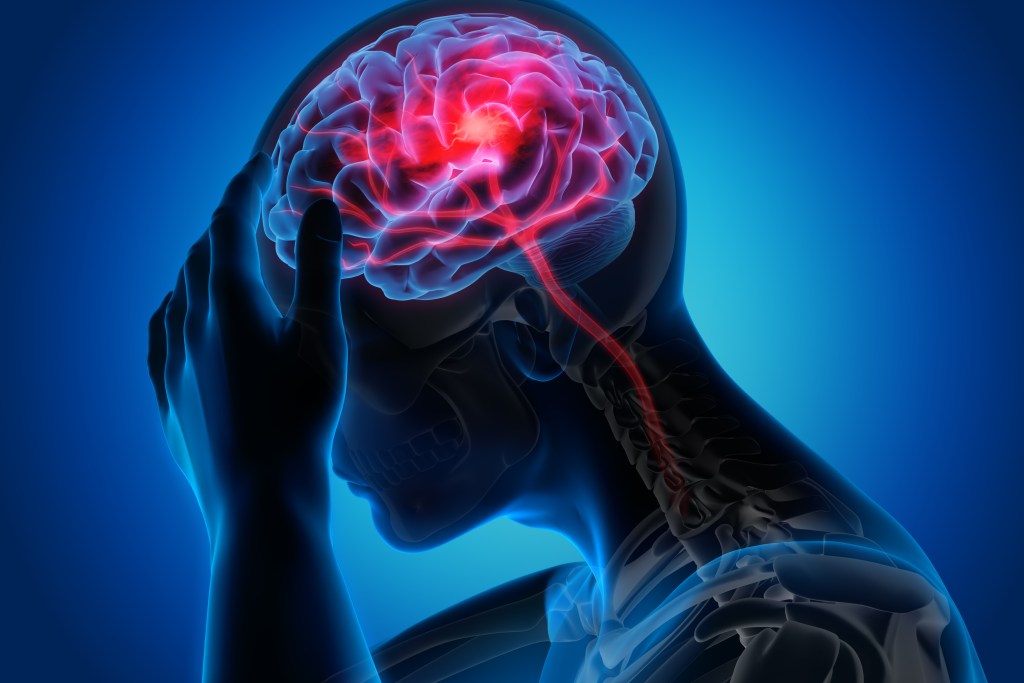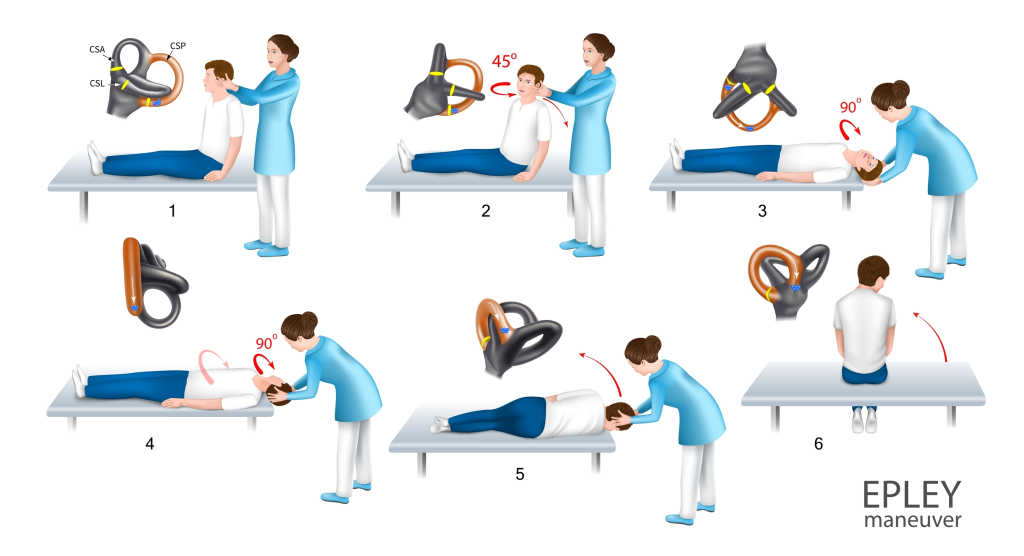At a glance
Ear crystals, or otoconia, are tiny calcium carbonate particles in the inner ear that help the brain detect motion and maintain balance. When these crystals become dislodged, they can move into the semicircular canals, disrupting equilibrium and causing vertigo. Factors such as aging and head injury can contribute to crystal displacement and related balance issues.
Tiny calcium crystals located in the vestibular system of the inner ear help the brain sense changes in acceleration and gravity, playing a key role in balance and body orientation.
Several factors, including head trauma and aging, can dislodge these ear crystals, leading to vertigo symptoms, such as dizziness, nausea, and blurred vision.
Learn what causes this imbalance and discover how to dissolve ear crystals related to vertigo naturally.
What are ear crystals?
There are three primary parts to ear anatomy: the outer, middle, and inner ear.
The outer and middle ear are responsible for directing and amplifying sound waves inside the ear canals and into the eardrums.
The inner ear transforms sound waves into electrical signals that the brain can interpret as sound. It also contains the vestibular system, which provides the brain with information regarding head movement, spatial orientation, and balance to maintain equilibrium in the body.
This part of the ear also contains otoconia, commonly known as ear crystals, which are small calcium carbonate crystals located in the otolith organs called the saccule and utricle.
As the head moves, these tiny crystals shift, stimulating sensory hair cells within the saccule and utricle. This helps the brain interpret the body’s position and motion.

What causes dislodged ear crystals?
Ear crystals typically rest in the otolith organs but can travel into the semicircular canals. These canals are fluid-filled tubes in the inner ear that detect rotational head movements and help maintain equilibrium.
Dislodged ear crystals, known as canaliths, can occur due to everyday movements, such as turning the head, standing too quickly, rolling over in bed, or lying in the same position for too long.
However, the most common causes are ear infection, head trauma, falls, or aging. Over time, aging naturally decreases the density of ear crystals, making them more likely to become dislodged and float out of place.
Ear crystals and vertigo
When ear crystals are displaced, balance regulation can become disrupted, leading to a spinning sensation while in motion, a condition known as benign paroxysmal positional vertigo (BPPV).
BPPV can develop suddenly and trigger various symptoms that range in severity. While some symptoms may only last a few seconds, others can last for days and even weeks, making everyday tasks challenging.
Common symptoms associated with vertigo include:
- Spinning sensations
- Loss of balance
- Difficulties standing or walking
- Nausea
- Blurry vision
- Headaches
- Tinnitus (ringing in the ears)
- Light sensitivity
- Nystagmus (rapid, involuntary eye movement)
Severe cases of vertigo can also induce nausea and vomiting due to the constant whirling sensation while moving.

How to dissolve ear crystals
In addition to trauma and aging, research published in the Journal of Neurology suggests a potential link between low vitamin D levels, osteoporosis, and BPPV.
Because vitamin D deficiency may be linked to vertigo, boosting vitamin D intake with regular sun exposure and foods such as cod liver, wild-caught fish, and eggs can support normal spatial awareness.
Vitamin K2 also plays a critical role in calcium regulation by directing calcium away from soft tissues and depositing it into bones and teeth.
This helps prevent calcium from building up where it shouldn’t, supporting the body’s ability to dissolve excess ear crystals and potentially reducing the risk of them becoming dislodged.
Some of the best food sources of vitamin K2 include fermented foods such as sauerkraut, kimchi, and kefir, as well as organ meat, grass-fed butter, and egg yolks.
“People with vertigo have higher calcium concentrations in the lymph and tissues,” explains Dr. Berg. “Maintaining optimal levels of vitamin D and vitamin K helps regulate calcium balance, which may ease vertigo symptoms by directing excess calcium out of soft tissues and into the bones where it belongs.”

Additionally, the canalith repositioning procedure, also known as the Epley or canalith repositioning maneuvers, may help alleviate vertigo symptoms.
This procedure is a series of head movements involving:
- Tilting the head toward the affected ear
- Lying on the back with the head positioned near the edge of the examination table
- Moving the head to the opposite position
- Rotating the body in alignment with the head
- Moving back to a sitting position
A study published in the International Journal of Otolaryngology found that “90% of patients were either improved or cured after a single session with either Semont’s or Epley maneuver.”
However, vertigo symptoms may worsen during treatment or require several maneuvers before symptoms subside.
Consulting a trained physical therapist for repositioning maneuvers is recommended to ensure the technique is performed safely and effectively.

When to talk to your doctor
Vertigo can disrupt normal life, and it’s important to see your doctor as soon as you notice symptoms for proper diagnosis and treatment.
BPPV is typically resolved with the Epley maneuver. However, doctors may also prescribe motion sickness medications to help alleviate symptoms.
Contact your healthcare provider immediately if you experience the following:
- Sudden or consistent vertigo
- Recurrent vertigo
- Disruptive symptoms that impact daily life
- Severe headaches or migraines
- Vomiting
- Fever
- Double vision
- Hearing loss
- Difficulty speaking
- Tingling or numbness
Dizziness and other vertigo symptoms can also be a sign of serious medical events, such as a stroke. If in doubt, visit the nearest emergency room for evaluation and treatment.
Key takeaways
- Ear crystals play an essential role in the vestibular system by helping the brain interpret motion and maintain balance.
- Factors such as head trauma, sudden movements, or aging can cause these crystals to dislodge and move into the semicircular canals.
- Displaced ear crystals can disrupt balance and trigger vertigo symptoms, including dizziness and blurred vision.
- Adequate intake of vitamin D and vitamin K supports calcium balance, which may help prevent or dissolve dislodged ear crystals.
FAQ
1. How can I fix ear crystals?
Ear crystal issues are often resolved with the Epley maneuver, which involves having a therapist rotate the head and body to replace dislodged canaliths.
Additionally, ear crystals may be linked to vitamin D deficiency, which explains why improving vitamin D levels with consistent sun exposure and vitamin D-rich food may help reduce symptoms.
2. What are the signs of dislodged ear crystals?
Dislodged ear crystals can increase sensitivity to everyday movements, such as turning the head or standing up. Symptoms of displaced ear crystals related to vertigo include dizziness, imbalance, nausea, and blurry vision.
Severe cases of dislodged ear crystals may also induce nausea or vomiting due to the spinning sensation.
3. What triggers BPPV attacks?
Benign paroxysmal positional vertigo (BPPV) attacks are triggered when tiny ear crystals become dislodged and move into the semicircular canals, often caused by head trauma, sudden movements, or aging. These shifts disrupt balance signals, leading to dizziness and vertigo.
4. What is the Epley maneuver?
The Epley maneuver involves moving the head to reposition dislodged ear crystals. Healthcare providers use it to treat BPPV by tilting the head and rotating the body.











